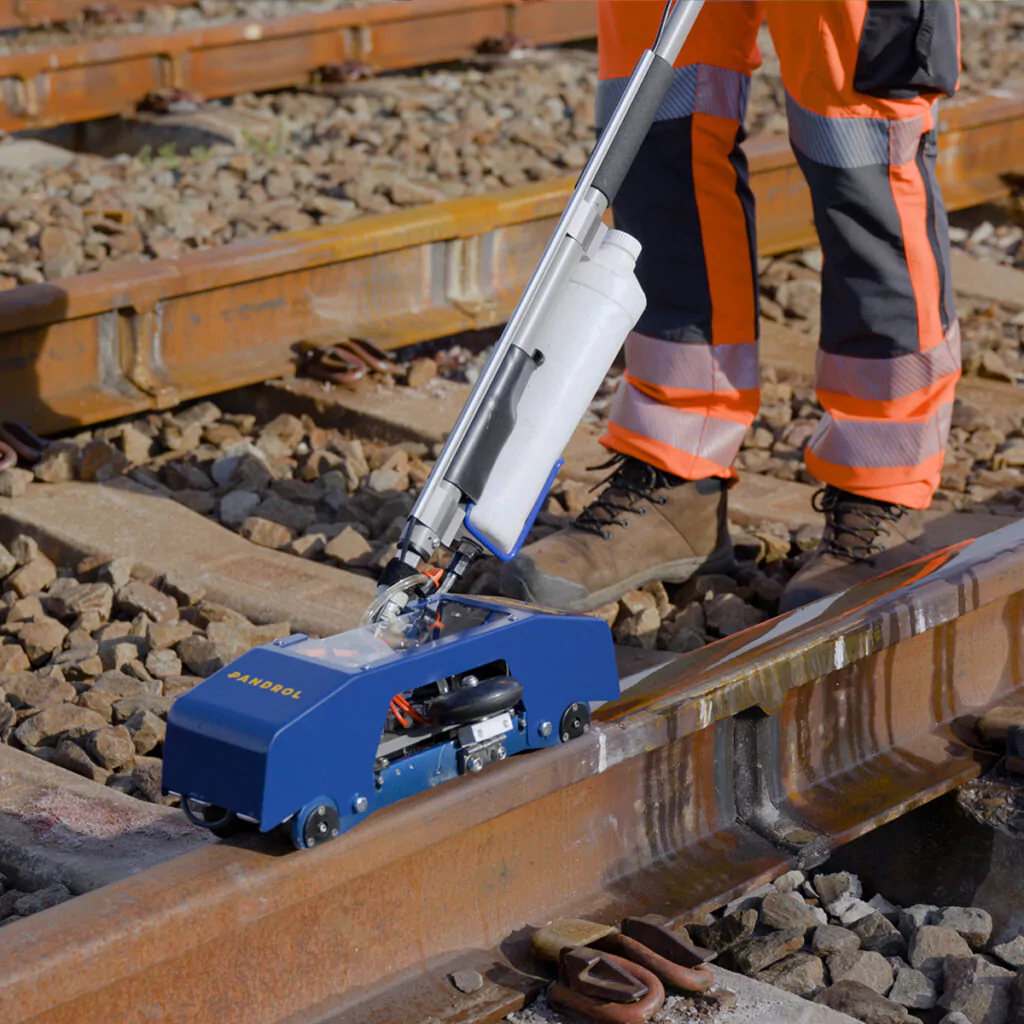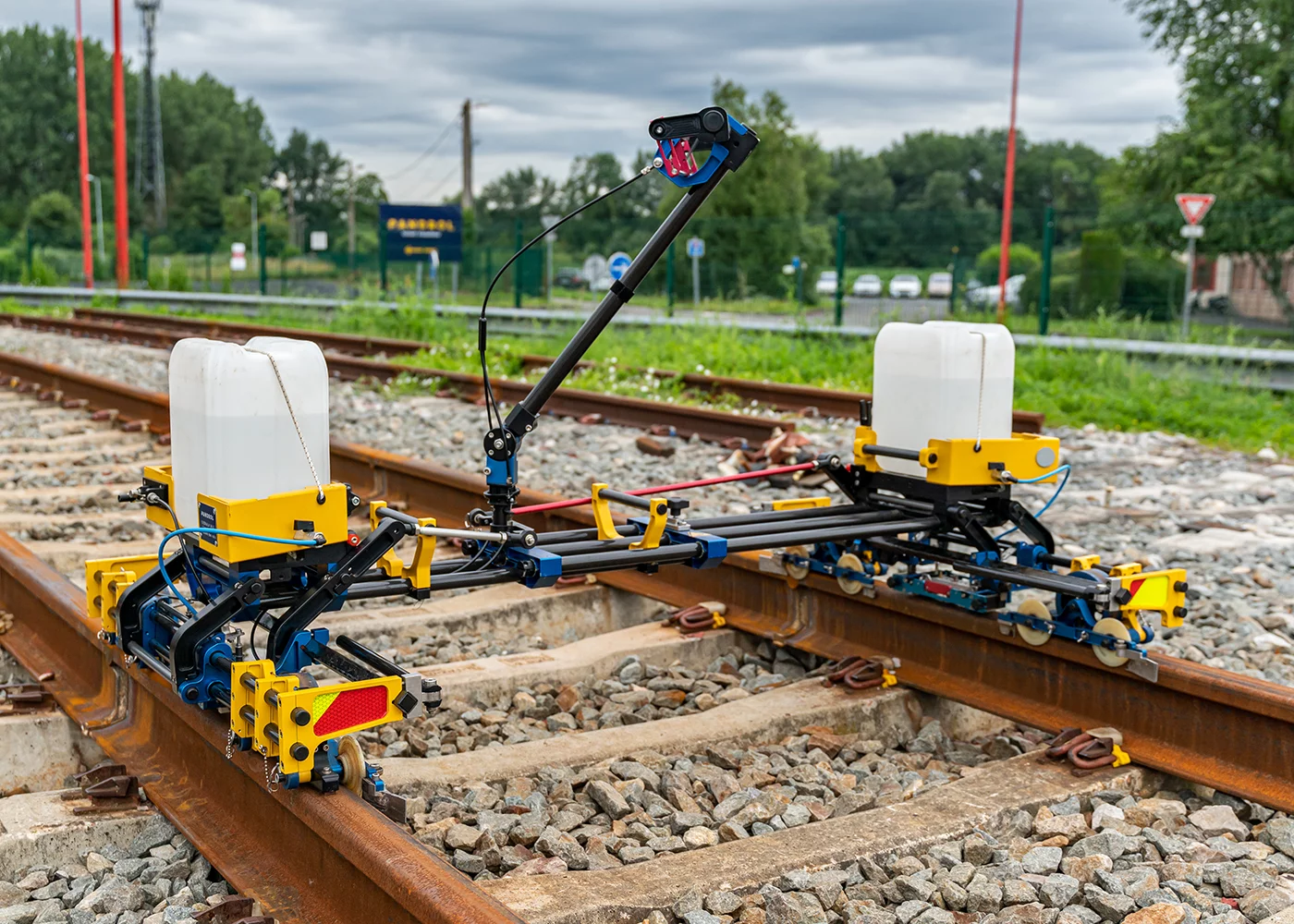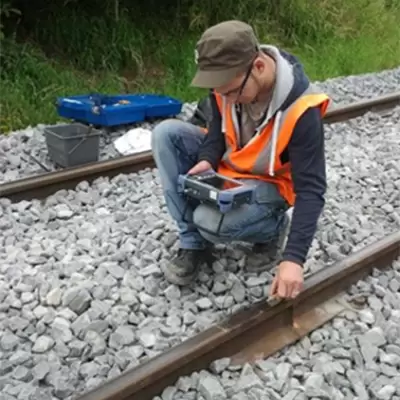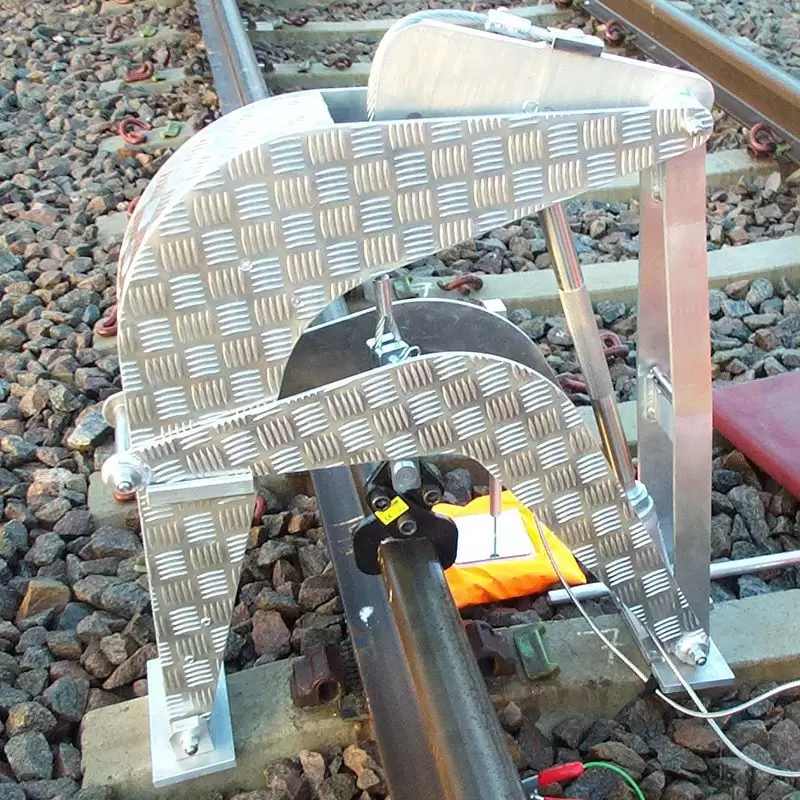Rail Ultrasonic
Ultrasonic rail testing is a full-track inspection solution that uses high-pitched waves to scan rails and identify internal flaws in need of repair. Pandrol teams are experts in the application of ultrasonic rail inspection, and our certified inspectors can provide comprehensive training tailored to your infrastructure, setting, and use case.
Ultrasonic Rail Testing product overview
Ultrasonic rail testing is a full-track inspection solution that uses high-pitched waves to scan rails and identify internal flaws in need of repair. Pandrol teams are experts in the application of ultrasonic rail inspection, and our certified inspectors can provide comprehensive training tailored to your infrastructure, setting, and use case.
Our range of ultrasonic equipment includes both manual and motorised inspection tools, which can be operated at up to 20 km per hour. Learn more about our equipment, processes, and training on this page.
Ultrasonic rail testing companies have a responsibility to provide reliable equipment, fully-trained operators, and optimal results. Trust Pandrol’s track record for safety, accuracy, and upholding industry-leading standards.
- Prevent failures and accidents – reduce the risk of non-detection
- Check small or large sections of rail – choose the equipment to suit your project
- Rely on ultrasonic for comprehensive testing – check rails vertically and from many other angles for a full picture
Downloads
Our products

Characteristics, metrics analysed, SonicVizio-WS-S is a lightweight system used in rail flaw detection on any type of track. Equipped with a 5 angled probe 40/70/0TR/40/70°,
it allows the detection and characterization of internal defects inside rail, weld and all components of the track.
i+detect (SonicVizio-WS-S)

SonicVizio-WS-S is a trolley used in rail flaw detection on any type of track. Equipped with a 5 angled probe 40/70/0TR/40/70°, it allows the detection and characterization of internal defects inside rail, weld and all components of the track.
SonicVizio-TR-S
Advantages of Ultrasonic Rail Testing
Predictive maintenance
Pandrol ultrasonic rail inspection detects rail defects earlier than manual methods thanks to its increased sensitivity. This allows for preventative maintenance to be planned as far ahead as possible, reducing disruptions to the rail system including speed restrictions.
Reduced costs
Earlier and more efficient management of track defects cuts repair and replacement costs in the long run. Fewer breakages and anticipated replacements lead to fewer losses and cheaper repairs to maintain rail performance.
Improve safety
Ultrasonic methods of rail monitoring reduce the need for manual verification thanks to their proven accuracy and reliability. This decreases the need for on-track workers, promoting safety and reducing the risk of accidents. The effectiveness of ultrasonic detection protects workers, rail staff, and passengers from potential accidents caused by undetected defects.
Future-proof your track
Extend the life span of your railway system’s assets, with a testing method that detects faults early enough for repair to be an option. Ultrasonic rail inspection also allows maintenance teams to adapt to increasing traffic demands on the rail network. More frequent trains have reduced opportunities to inspect – the speed of ultrasonic testing circumvents this challenge without compromising safety.
Improve defect knowledge
Rely on ultrasonic rail testing to gather a detailed analysis of all essential elements relating to track safety, strength, and integrity. From rails to bonded insulating seals, switches to crossings, ultrasonic testing gathers and stores an accurate data record of track condition. This is ideal for learning and analysing track degradation or durability over time.
Increase efficiency
Ultrasonic testing of railway track can be carried out much faster than manual methods, while also being far more sensitive to minute defects and flaws in the rail. It reduces the risk of human error impacting the testing process, and can even be completed on areas of the rail where worker and equipment access is limited. The result is a more efficient means to monitor rail conditions.
Technical features of Ultrasonic Rail Testing
Work with ultrasonic experts
Our team of experts is comprised of level I, II and III NDT certified inspectors with more than 30 years of experience in Non-Destructive Testing. We offer our Ultrasonic Testing services to
customers worldwide to enhance the quality and lifetime of their infrastructure.
Inspect 100% of the weld
Our ultrasonic testing stick uses five angled probes positioned at -70° / -40° / 0° / +40° / +70° to get a fully detailed ultrasonic analysis of the rail.
Multiple options available
Pandrol offer their customers three methods of ultrasonic testing: a handheld walking stick with 10 hours of battery life, a trolley that can analyse both track simultaneously, and a motorized solution that can inspect both rails at a speed of up to 20 km/h.
Versatile design
Our Ultrasonic Testing solutions detects a variety of defects including blowholes, insufficient fusion, and shrinkage. We offer both conventional probes and newer phase array technology.
Realtime data
The information collected by the transducers are transmitted to the displays in realtime for instant data viewing and analysis.
Walking stick
- Anti-derailment wheel
- Height-adjustable telescopic handle
- Single man operation
- Simple connection to UT flaw detector
- Inspects all track components, including rail, welds, switches, crossing, and insulated joints
- Characterisation of defects after detection passage
Watch the video to see the Pandrol ultrasonic testing walking stick in action.

Ultrasonic trolley
- Capable of ultrasonic inspection of the two parallel rails simultaneously
- On the track and ready to go in less than 5 mins
- 23kg lightweight machinery for single-man operation
- Operation speeds up to 5kmph
- Suitable for rail temperatures from -10 to 55°C
- Adaptable to rail gauges from 1000 to 1674mm
- Multiangle detection of rail and weld defects
- Officially approved by French railways
- A-scan display
- Dead man’s breaking system
- Available with smart capabilities including B-scan display, encoder, recording and GPS localisation
Watch the video to see the Pandrol ultrasonic rail testing trolley in action.

Ultrasonic rail testing explained
Ultrasonic testing of railway tracks can produce a fully exhaustive report of the location, characteristics, and urgency of any defects detected. The method is ideal for taking dimensional and thickness measurements, characterising material and detecting damage. It is also sometimes referred to as ‘non-destructive testing’ thanks to its non-invasive nature.
The ultrasonic test procedure operates via a pulse-echo technique. This describes the process of passing short ultrasonic pulses from the equipment into the component, where they are then reflected by obstacles. The reflected pulses are then displayed on the screen for reading by the operator. Water or oil is applied to the probe to ensure no air interrupts the pulses, which could impact results.
This comprehensive process can be carried out on both rails and welds. Testing the head, web, and foot to provide a detailed picture of weld health allows engineers to confirm that rail welds meet the specifications set out by the rail network for quality and safety.

Related products

SonicVizio-WS-S is a trolley used in rail flaw detection on any type of track. Equipped with a 5 angled probe 40/70/0TR/40/70°, it allows the detection and characterization of internal defects inside rail, weld and all components of the track.
SonicVizio-TR-S

Characteristics, metrics analysed, SonicVizio-WS-S is a lightweight system used in rail flaw detection on any type of track. Equipped with a 5 angled probe 40/70/0TR/40/70°,
it allows the detection and characterization of internal defects inside rail, weld and all components of the track.
i+detect (SonicVizio-WS-S)

Developed in partnership with Amberg Technologies, Pandrol’s GeoVizio-TR-Smart is a new smart track geometry trolley for measuring the quality of track. It is an innovative track geometry trolley that quantifies the condition of track and determines Track Quality Index, as required in the new European Standard EN 13848-6.
GeoVizio-TR-Smart

We offer a range of solutions for different applications, allowing the user to take height and distance offset readings from the running rails to a desired object or position such as a Platform or Datum Plate.
Structure and Clearance

Pandrol’s Track Geometry Trolley is a dedicated device for recording track gauge, cant, twist, distance, and GPS positioning of the track. It has been designed to be quickly and easily assembled on-site without the need for tools, instantly providing live data and allowing rapid identification of problems in the track.
Track Geometry Trolley

The entire portfolio of Overhead Line Equipment easily folds up, and is ergonomically designed.
Overhead Line Measurement

The gauges have been designed with a sprung gauging foot, with all measurements being displayed on the end of the gauge, ensuring accurate measurements and minimising user error
Track Geometry Gauges

This comprehensive test is carried out on the head, web and foot to provide a detailed analysis of the entire weld.
Weld Inspection

Identifying points of undulatory wear on the rail head will outline where grinding actions need to be taken to prevent further deterioration.
Track Geometry

Pandrol VERSE® is a giant leap for track safety management, risk reduction and new track quality acceptance.



